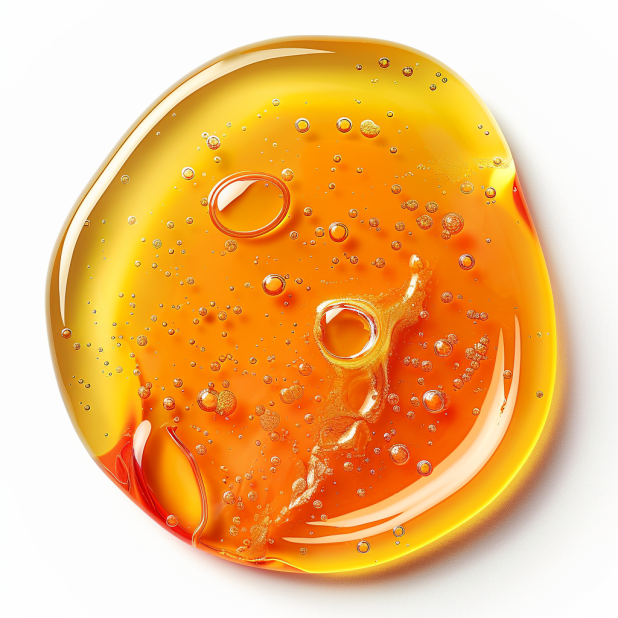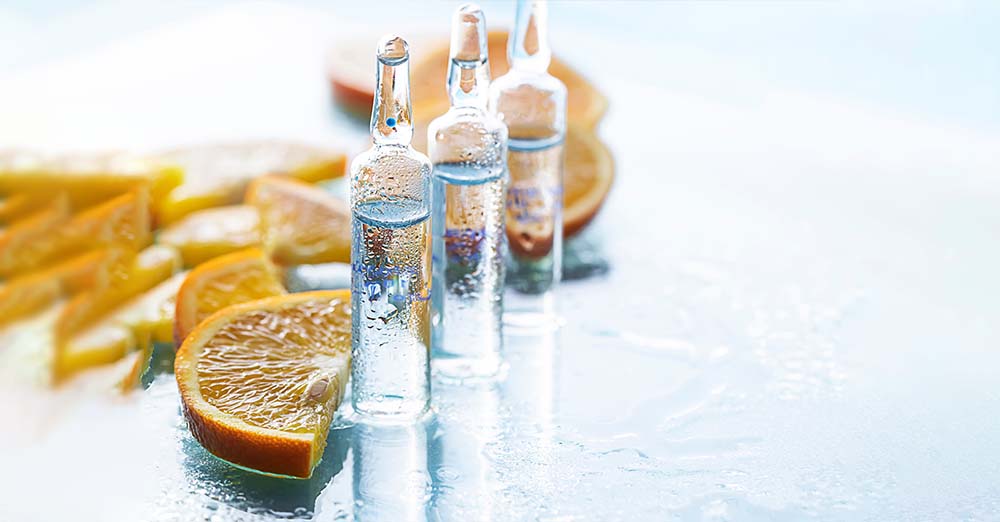Recently updated on: July 24th, 2023
Vitamin A is counted among the “vitamins of youth” and, not without reason, is widely used in the cosmetic industry i pharmaceutical industry. However, its name does not refer to just one compound. Vitamin A is actually a whole group of substances characterized by various biological activities. They include, among others retinol i retinoic acid.

Retinol
We are a wholesale distributor of top-notch retinol, which is a vitamin A derivative. To be more precise, it’s the most active vitamin A form available in the market.
What are the forms of vitamin A?
The term “vitamin A” applies to a group of substances with similar structure and biological activity. These compounds are also referred to as retinoids, and are natural or synthetic derivatives of retinol. (See also: How do I use retinol? )
Currently, retinoids are classified into three groups (generations):
- First generation retinoids (natural monoaromatic derivatives of retinol with non-selective properties):
- Retinol
- Retinal (retinaldehyde)
- Retinoic acid (tretinoin)
- Second generation retinoids (synthetic monoaromatic analogues of vitamin A with a structure similar to retinol):
- Acitretin
- Etretinate
- Motretinide
- Third generation retinoids (synthetic polyaromatic derivates with selective properties):
- Adapalene
- Bexarotene
- Tazarotene
Both retinol and retinoic acid (or tretinoin) belong to the first generation of retinoids and are compounds of natural origin. However, they differ in potency and application.
Retinoids and their effects
Vitamin A is well absorbed through the skin due to its high fat solubility. Their mechanism of action is based on their affinity for specific cell receptors – RAR (receptors for retinoic acid) and RXR (retinoid X receptors). Through them, retinoids affect the processes of cell differentiation and help maintain the proper state of the epidermis. Retinoic acid is the most potent compound, which can only be used in medicines. Retinol, on the other hand, is a substance with a slightly weaker activity, but is very popular in the cosmetic industry due to its high effectiveness.
Retinol in cosmetics
The beneficial effects of retinol on the skin are especially appreciated in anti-aging cosmetics. Vitamin A improves skin elasticity, fights discoloration and reduces wrinkles. This action is related, among other things, to the stimulation of fibroblast and keratinocyte proliferation. By strengthening the layers of the epidermis, retinoids reduce transepidermal water loss, and by inhibiting the transport of melanin, they level discoloration.
The antioxidant properties of vitamin A also translate into an anti-aging effect. By scavenging free radicals and reducing the production of metalloproteinases, retinoid-containing cosmetics protect against the damaging effects of UV radiation and counteract skin photoaging. In the cosmetic industry, retinol is typically used in concentrations ranging from 0.5 to 2%.
Therapeutic uses of retinoic acid
Tretinoin, like its derivative isotretinoin, is a compound known for its high efficacy in acne therapy. Retinoic acid, by affecting cell proliferation and differentiation, has an exfoliating effect on dead epidermal cells and accelerates the replacement of its outer layers. In addition, it regulates the processes of epidermal keratinization and sebum secretion, and has anti-inflammatory properties.
When applied to the skin in concentrations of 0.01-0.4%, it is therefore an effective treatment for juvenile acne. However, due to its potent effects and associated possible side effects, retinoic acid is banned for use in cosmetics and is only available in prescription medications – usually in combination with antibiotics (clindamycin or erythromycin). Treatment with tretinoin or oral isotretinoin must be carried out under a doctor’s supervision.
Side effects
Regrettably, the use of retinoids may be linked to quite many adverse reactions. When using the products, it is important to avoid exposure to strong sunlight, as they can be photosensitizing and increase the risk of burns. Other common side-effects of vitamin A include:
- Reddening of the skin
- Excessive peeling of the skin
- Rashes, itching and burning sensations
- Skin dryness
- Skin irritation
These compounds also have proven teratogenic effects – toxic to the fetus. Oral use is therefore absolutely contraindicated in pregnant and breastfeeding women. They should also avoid using retinoids externally, on the skin, due to the possibility of absorption into the bloodstream.
Bibliography:
- Bojarowicz H, Płowiec A. Wpływ witaminy A na kondycję skóry. Problemy Higieny i Epidemiologii (2010), 91(3): 352-356.
- Marona H, Gunia A, Pękla E. Retinoidy – rola w farmakoterapii w aspekcie komórkowego mechanizmu działania. Farmacja Polska (2010), 66(3): 187-192.
- Zasada M, Adamczyk A. Witamina A. Budowa i Mechanizm działania. Kosmetologia Estetyczna (2018), 5(7): 517-520.
- https://dermatic.pl/aestheticbusiness/2021/09/01/formy-witaminy-a-retinol-retinal-kwas-retinowy/


